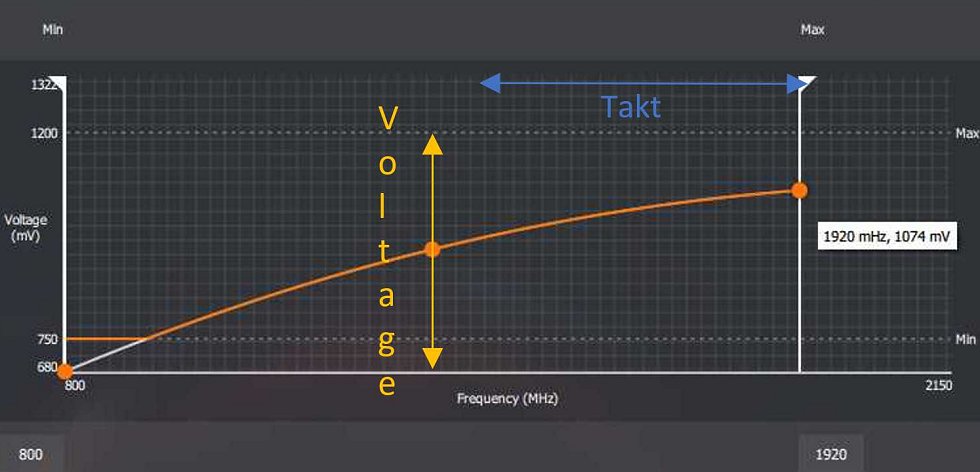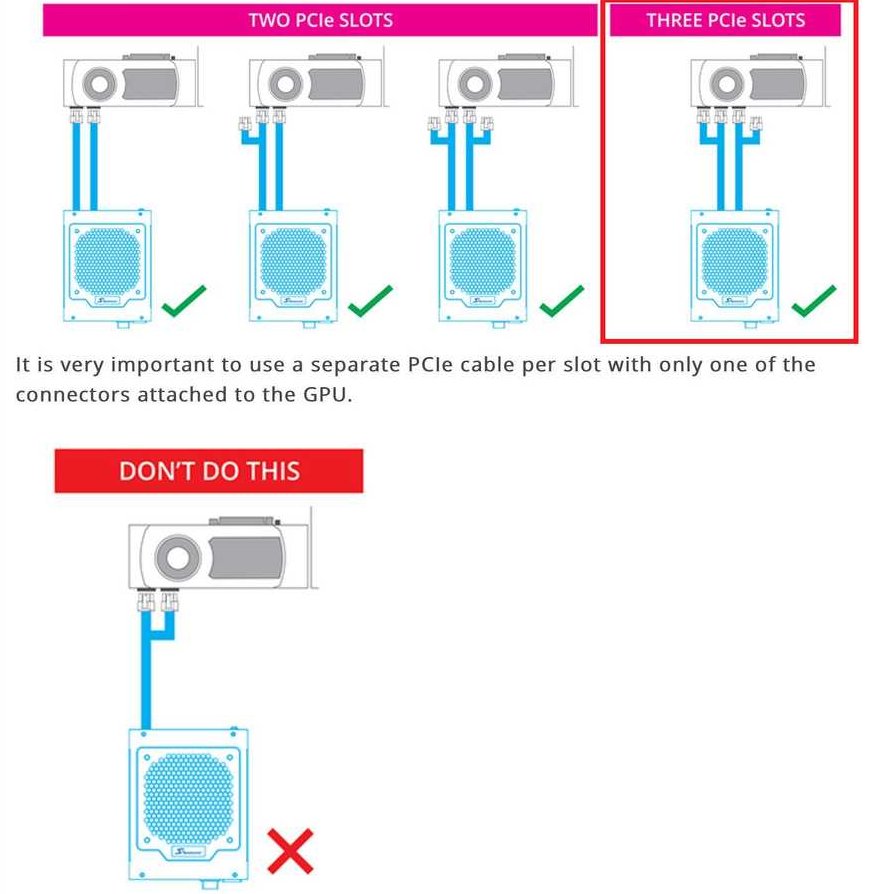Overclocking
The Big Navis are great card for overclockers, because there is plenty of room, rich frequencies and the PowerLimit is thanks to MorePowerTool an (almost) arbitrary changeable value. The whole thing is unfortunately once again a little bit very special, as you know it from AMD. Also from previous launches. Important for you to know when tweaking: The tension you set in the Wattman is not the maximum tension the card applies! So understand the slider more as pulling a certain voltage offset. This works directly with the set clock rate. To illustrate this a little, here is a picture from the Wattman of a RX 5700.
The maximum voltage will only be reduced if the offset is set very low and falls below your set beat on the imaginary scale. It’s a little cryptic, but in the end it’s what comes out that counts. If you lower the voltage, your clock rates will also increase because the Boosttable applies less voltage for higher clock rates!
- Less voltage at bar X does not always mean better results! Always validate your overclocking/undervolting, too low a voltage will result in a kind of “clock stretching” like on Ryzen processors.
- To effectively undervolt, use MPT and edit your high voltage. Defines a clock level first and then scales the voltage slider until it becomes unstable. A little buffer of 10-20 mv prevents crashes from this and provides clean frametimes.
- The clock rate you set always has a slight offset based on the current flow and many other values from the arbitrator (clock/telemetry) of the card. Usually there is an offset with a slight fluctuation of about 50 MHz.
- The Wattman is currently a bit buggy, it likes to reset the set memory clock rates as well as a manual fan curve. But you can edit both values with the MorePowerTool. Entering absurd values in the memory clock leads to the fact that you can no longer boot Windows!
- It is currently not possible to edit the maximum values specified by AMD. So an XT can’t set more than 2800 MHz of clock and also the memory clock doesn’t go beyond 2150 MHz.
- Test the card and your overclocking stable in a demanding UHD application (A Volcano title or Division 2, Metro etc.), a title with raytracing, these usually need a tad more voltage (WatchDogs, Port Royal etc.) as well as in FHD or an application with low load whether here too high clock rate kicks you out (eg Assassins Creed)
- Be careful with memory overclocking to ensure that it does not reduce its performance at higher values or during long operation. Test the memory first. Fast Timings works without problems with most cards.
- Please be careful with the values Power Limit, TDC, GFX and TDC SOC. It is difficult to destroy something sustainably, but it is not impossible! Please do not chase more than 280 watts ASIC through an RX 6800e and not more than 330 watts ASIC through an RX 6800 XT. Exceptions to this are cards with significantly better phase placement, such as the Devil or the Strix.
- Increasing the SOC voltage is almost useless. But you can lower them sometimes significantly, values up to 950 mv are possible depending on card, chip and setting. But keep your hands off the minimum SOC voltage. You can improve your overclocking a lot, the exact effects I still have to investigate in detail, I didn’t have the time for that so far.
- If you want to change your fan setting, TAKE MPT! Simply change the Acoustic Limit and the target temperature there, done.
Error patterns during overclocking.
I could observe 3 error patterns on my cards, artifacts never occurred, which indicates that the memory was always well cooled enough.
- Application freezes, driver reset = core clock too high for the voltage
- Application closes directly = maximum clock rate too high, the card will probably not manage this clock rate.
- Computer freezes completely, card doesn’t boot anymore = The cards seem to have a kind of savemod that protects them from overload. Should this happen to you, disconnect the computer completely from the power supply for a few minutes. If this does not help, do a CMOS reset while the computer is disconnected from power. This only happens when you try to fire absurd wattages through the card via MPT and is not (or should not?) triggered by normal overclocking!
- Click and off, power supply is out. Switch to SingleRail if you can, check wiring. Always use two separate strings for multi-rail power supplies.
Undervolting
Is currently a complicated topic on the new Radeons, I will soon write my own article about it, that goes beyond the scope of this article.

































Kommentieren